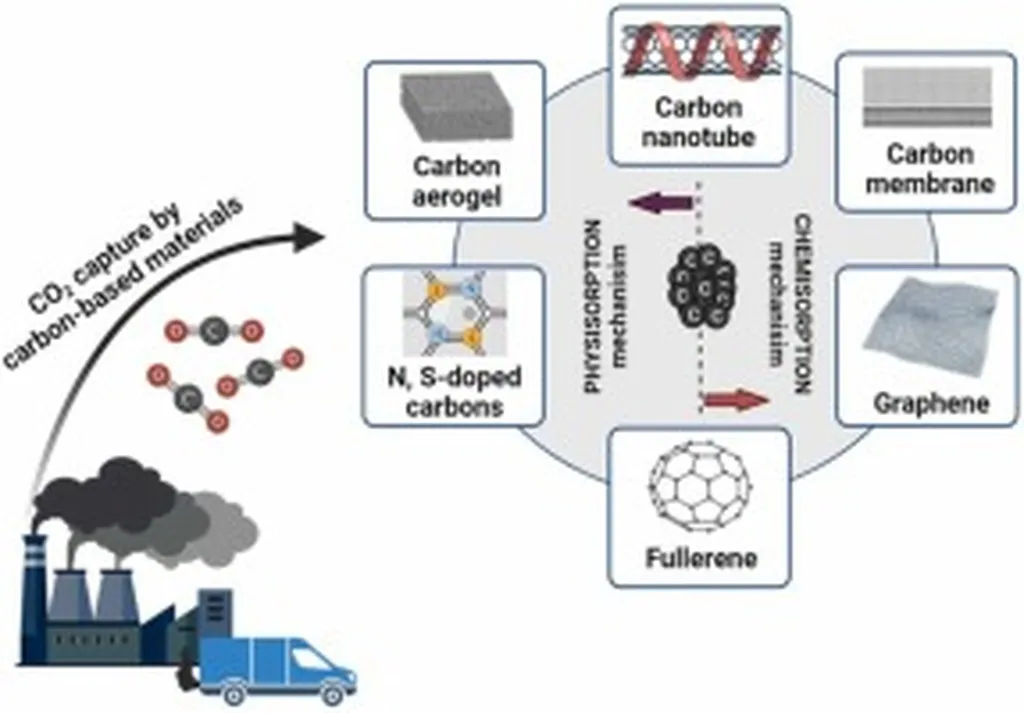In the race to mitigate climate change, scientists are turning to innovative technologies to capture carbon dioxide (CO2) directly from the air. A recent comprehensive review published in the journal *Molecules*, titled “Nanomaterials for Direct Air Capture of CO2: Current State of the Art, Challenges and Future Perspectives,” sheds light on the pivotal role of nanomaterials in this emerging field. Led by Cataldo Simari from the Department of Chemistry and Chemical Technology at the University of Calabria in Italy, the research offers a nuanced look at the advancements, challenges, and future prospects of Direct Air Capture (DAC) technologies.
Direct Air Capture is gaining traction as a critical strategy for actively removing CO2 from the atmosphere. The review synthesizes the latest advancements in DAC technologies, with a particular focus on nanostructured solid sorbent materials. These materials, including metal–organic frameworks (MOFs), covalent organic frameworks (COFs), zeolites, amine-functionalized polymers, porous carbons, and layered double hydroxides (LDHs), play a crucial role in capturing CO2 from the air. Each of these materials has unique characteristics, performance levels, and limitations, particularly in terms of CO2 uptake capacity, regeneration energy requirements, and sensitivity to water.
“Beyond traditional temperature and pressure swing adsorption, we are seeing innovative methodologies like Moisture Swing Adsorption (MSA), Electro Swing Adsorption (ESA), Passive DAC, and CO2-Binding Organic Liquids (CO2 BOLs) emerging,” Simari explains. These new approaches offer the potential for reduced energy footprints and improved efficiency, which are critical for the scalability and commercial viability of DAC technologies.
Despite significant progress, the widespread deployment of DAC faces formidable challenges. High capital and operational costs, substantial energy demands, water interference, scalability hurdles, and sorbent degradation are among the key obstacles. The review highlights that the current cost of DAC ranges from USD 300 to USD 1000 per ton of CO2, with energy requirements ranging from 1500 to 2400 kWh per ton of CO2. These factors pose significant barriers to the adoption of DAC technologies, particularly in developing countries.
The review also examines the burgeoning global DAC market, its diverse applications, and the critical socio-economic barriers to adoption. A comparative analysis of DAC within the broader carbon removal landscape, including Carbon Capture and Storage (CCS), Bioenergy with Carbon Capture and Storage (BECCS), and afforestation, is provided. The research underscores the importance of environmental considerations for the sustainable production, regeneration, and disposal of spent nanomaterials, drawing insights from Life Cycle Assessments.
“Commercial viability is a multi-faceted challenge involving material performance, synthesis cost, regeneration energy, scalability, and long-term stability,” Simari notes. The review emphasizes that no single ‘best’ material exists, but rather a portfolio of technologies will be necessary. The ultimate success of DAC will depend on system-level integration and the availability of low-carbon energy.
This comprehensive review contributes to a holistic understanding of cutting-edge DAC technologies, bridging material science innovations with real-world implementation challenges and opportunities. By identifying critical knowledge gaps and pathways toward a net-zero carbon future, the research paves the way for future developments in the field. As the energy sector continues to evolve, the insights from this review will be instrumental in shaping the future of carbon capture and climate change mitigation.
Published in the journal *Molecules*, this research offers a nuanced and thought-provoking perspective on the current state and future potential of Direct Air Capture technologies. As the world grapples with the urgent need to reduce atmospheric CO2 levels, the findings from this review provide a roadmap for advancing the field and achieving a net-zero carbon future.

